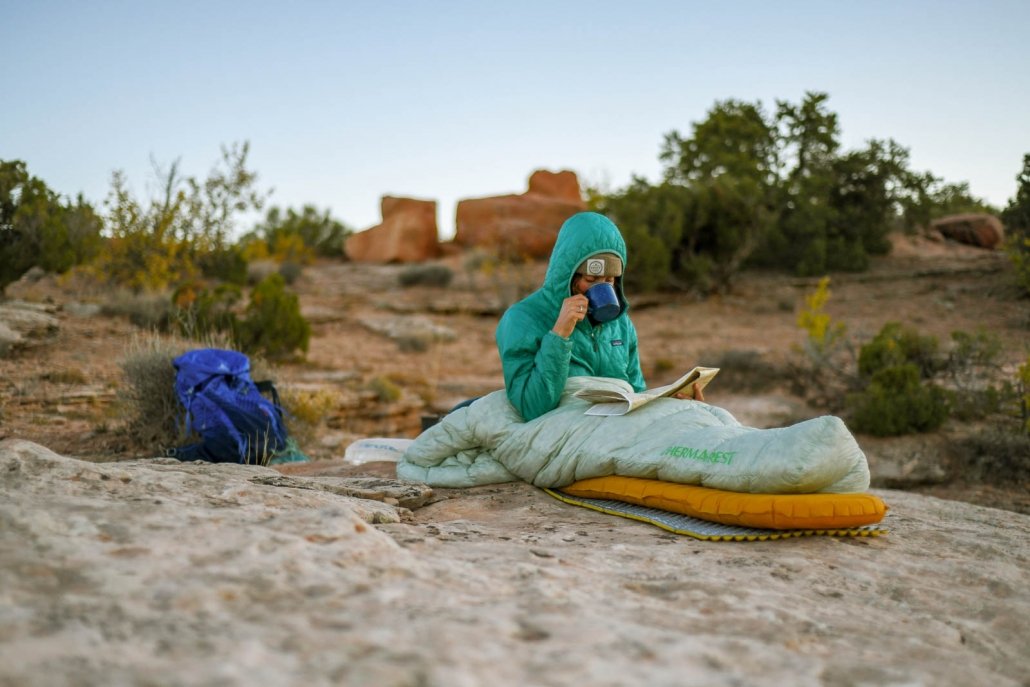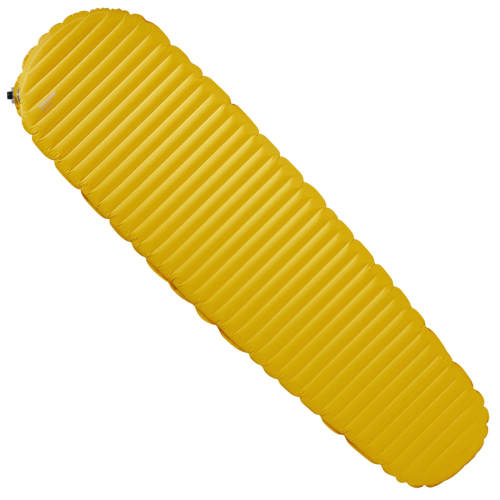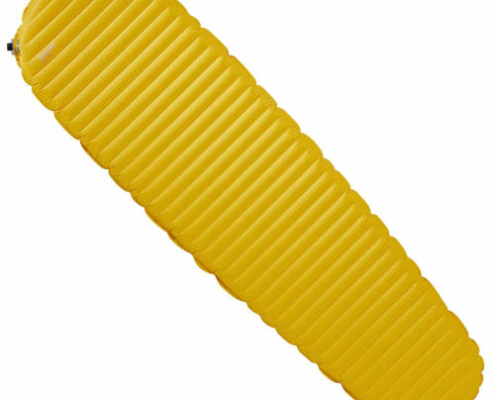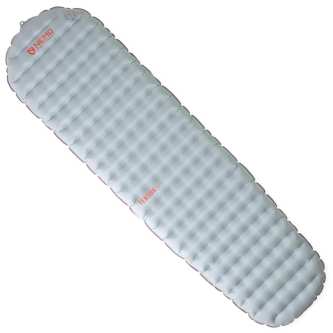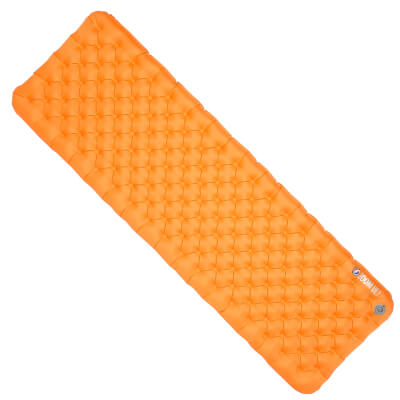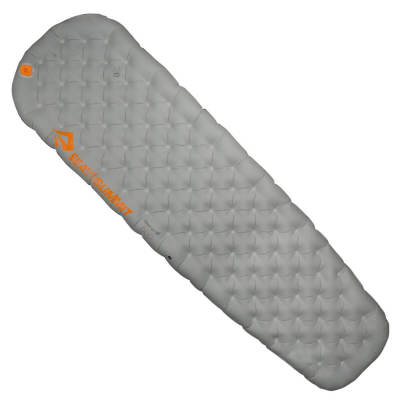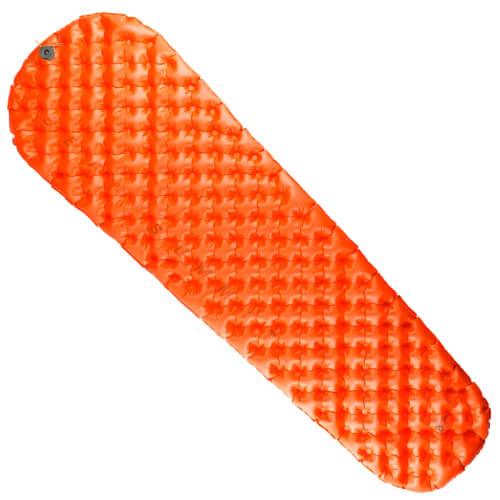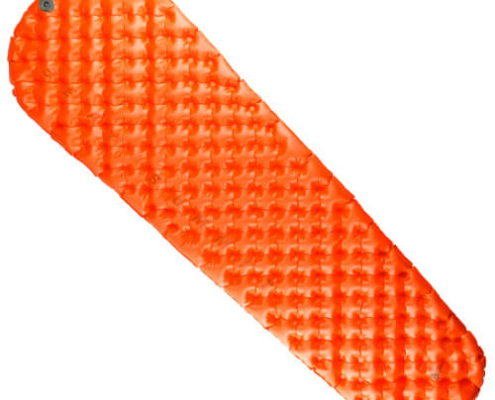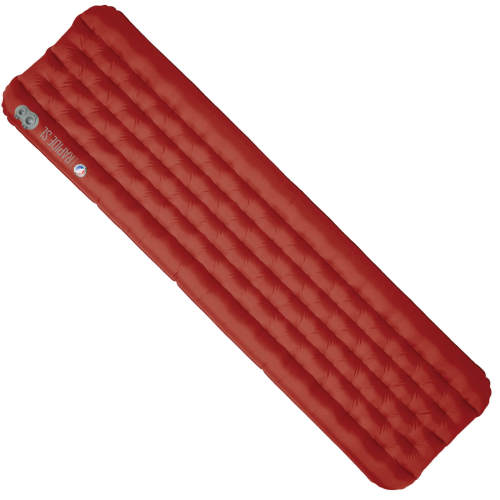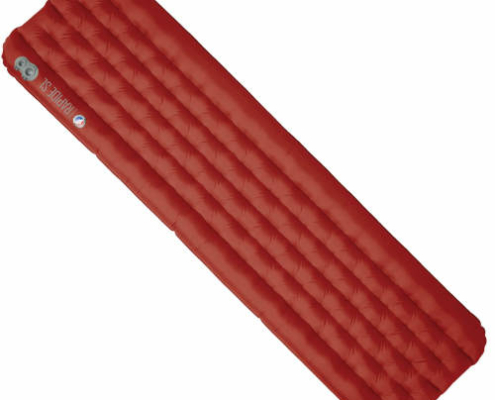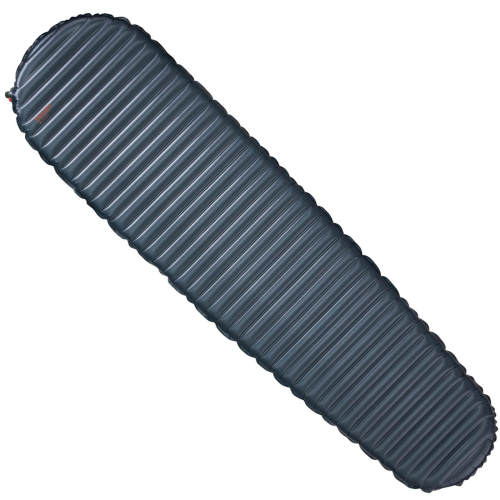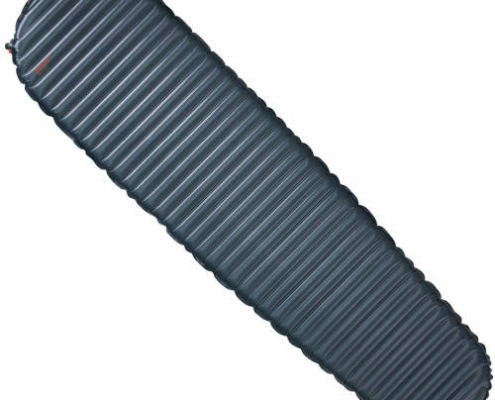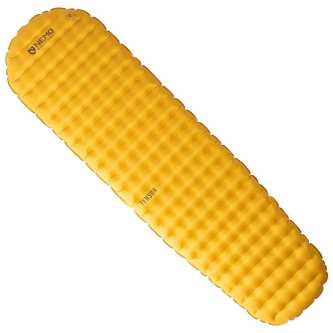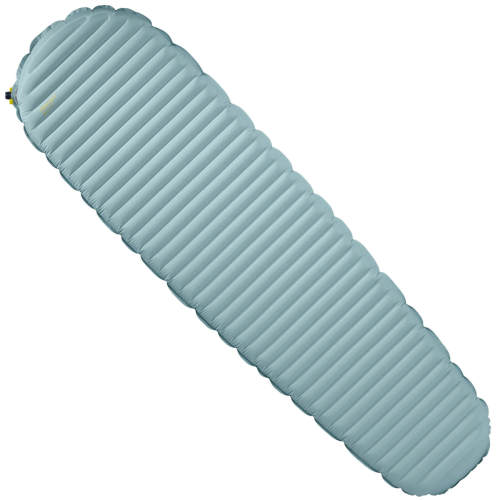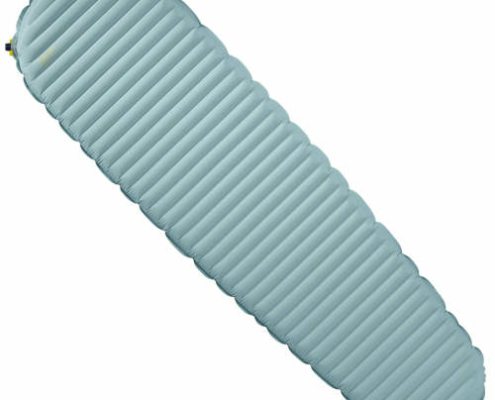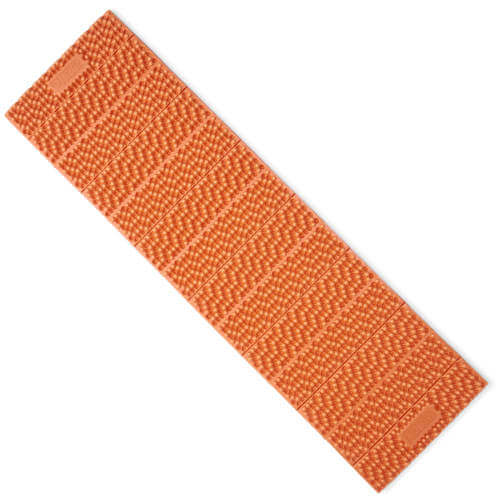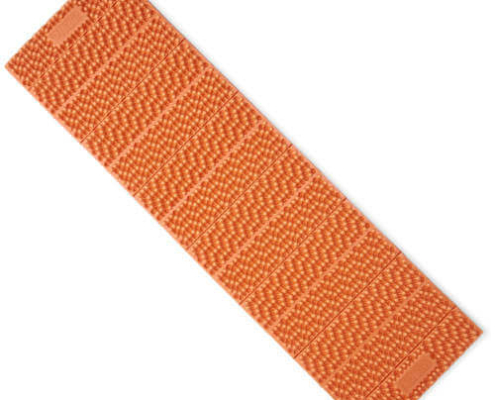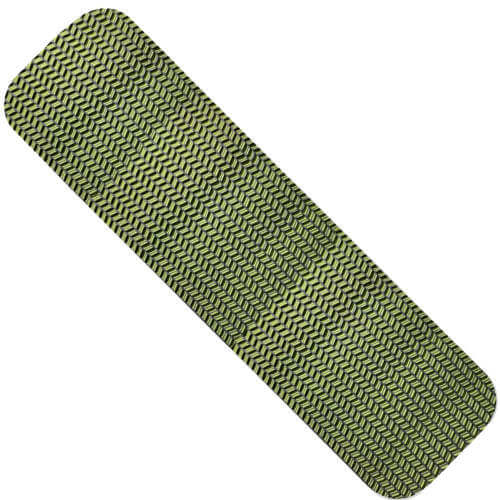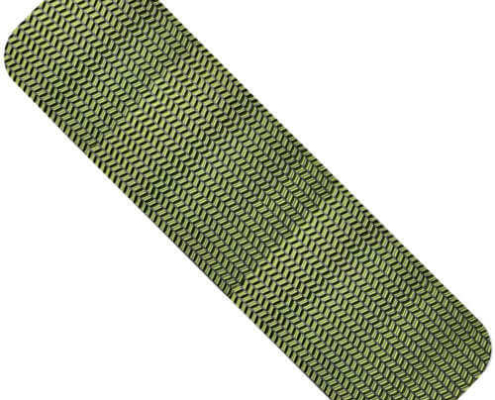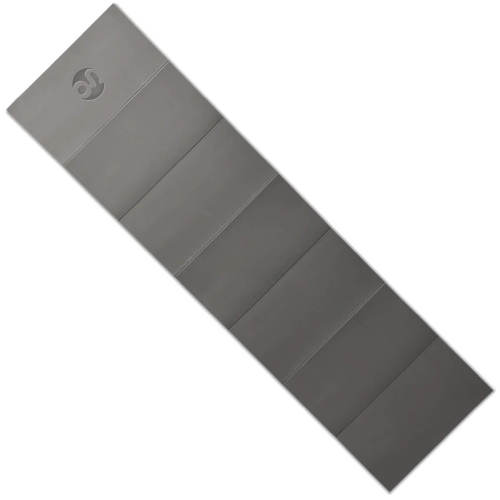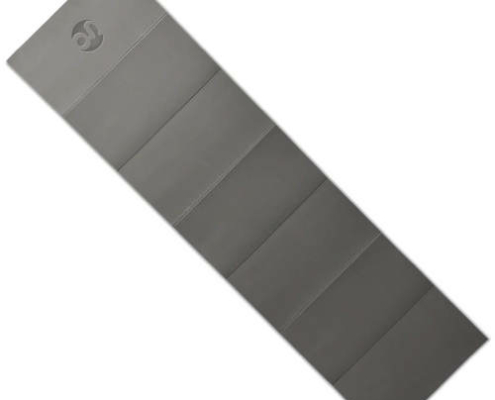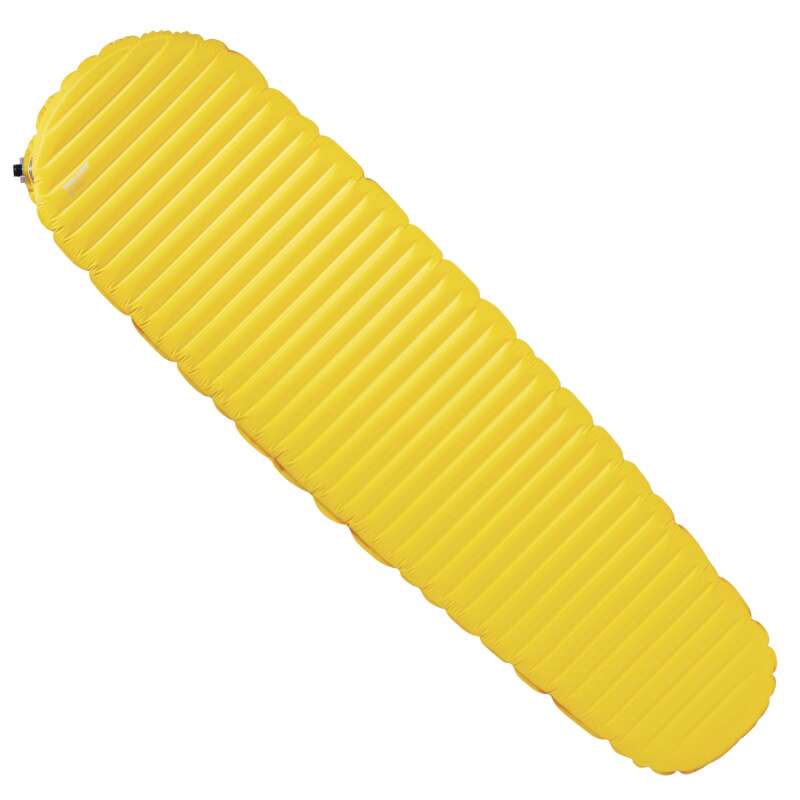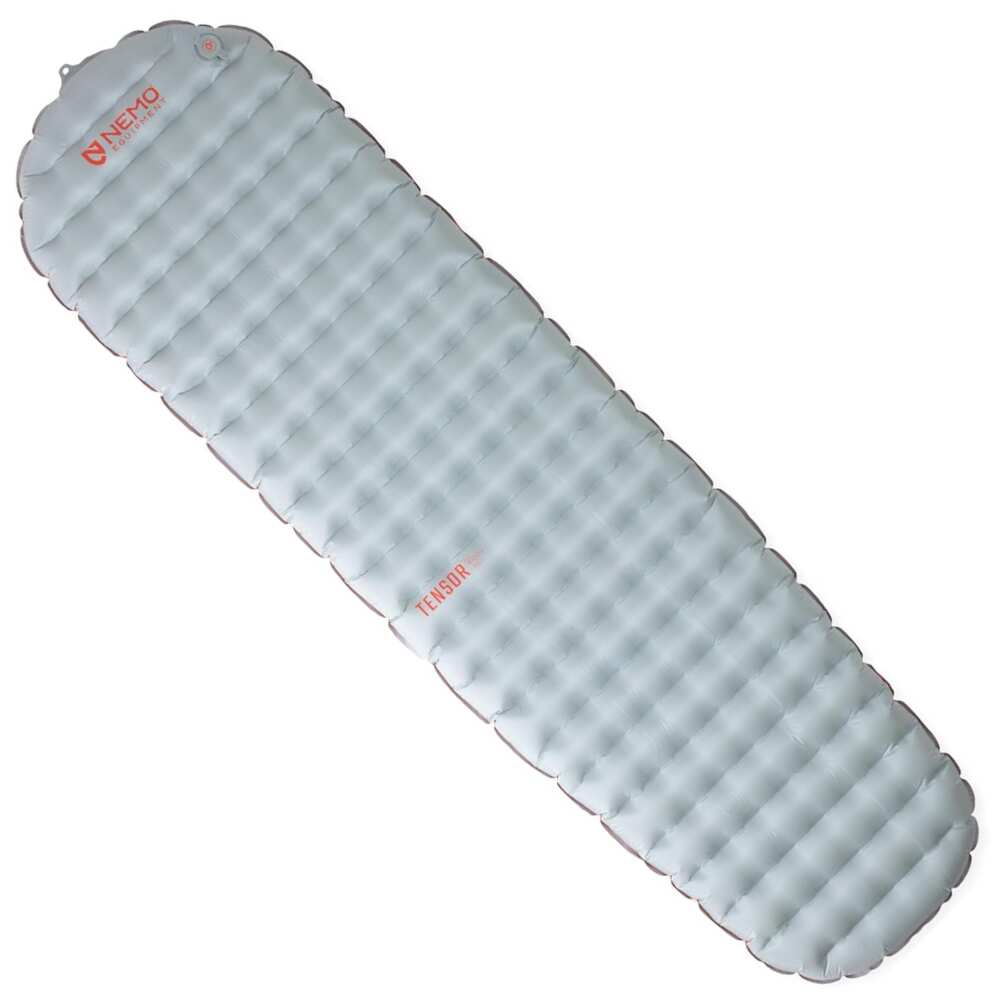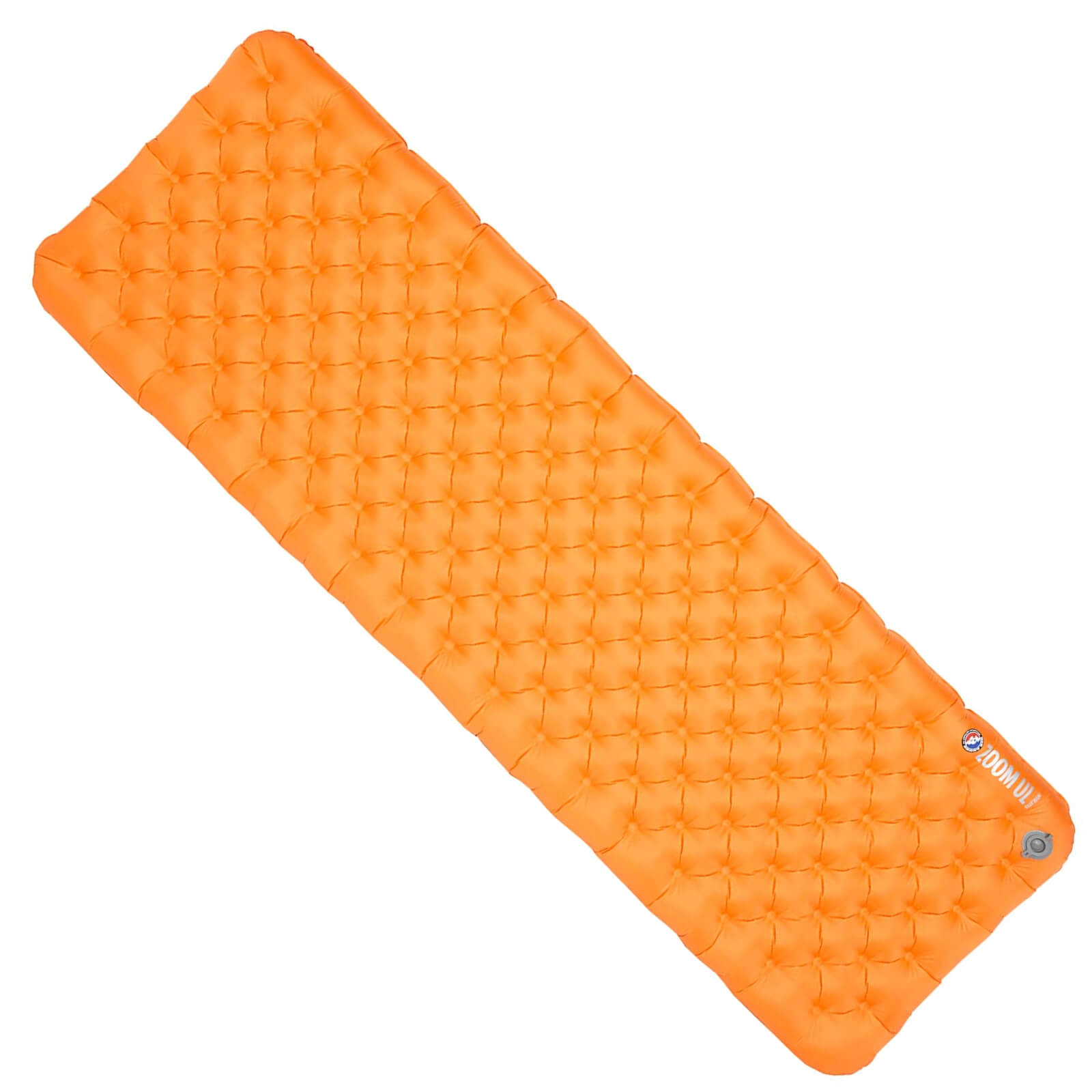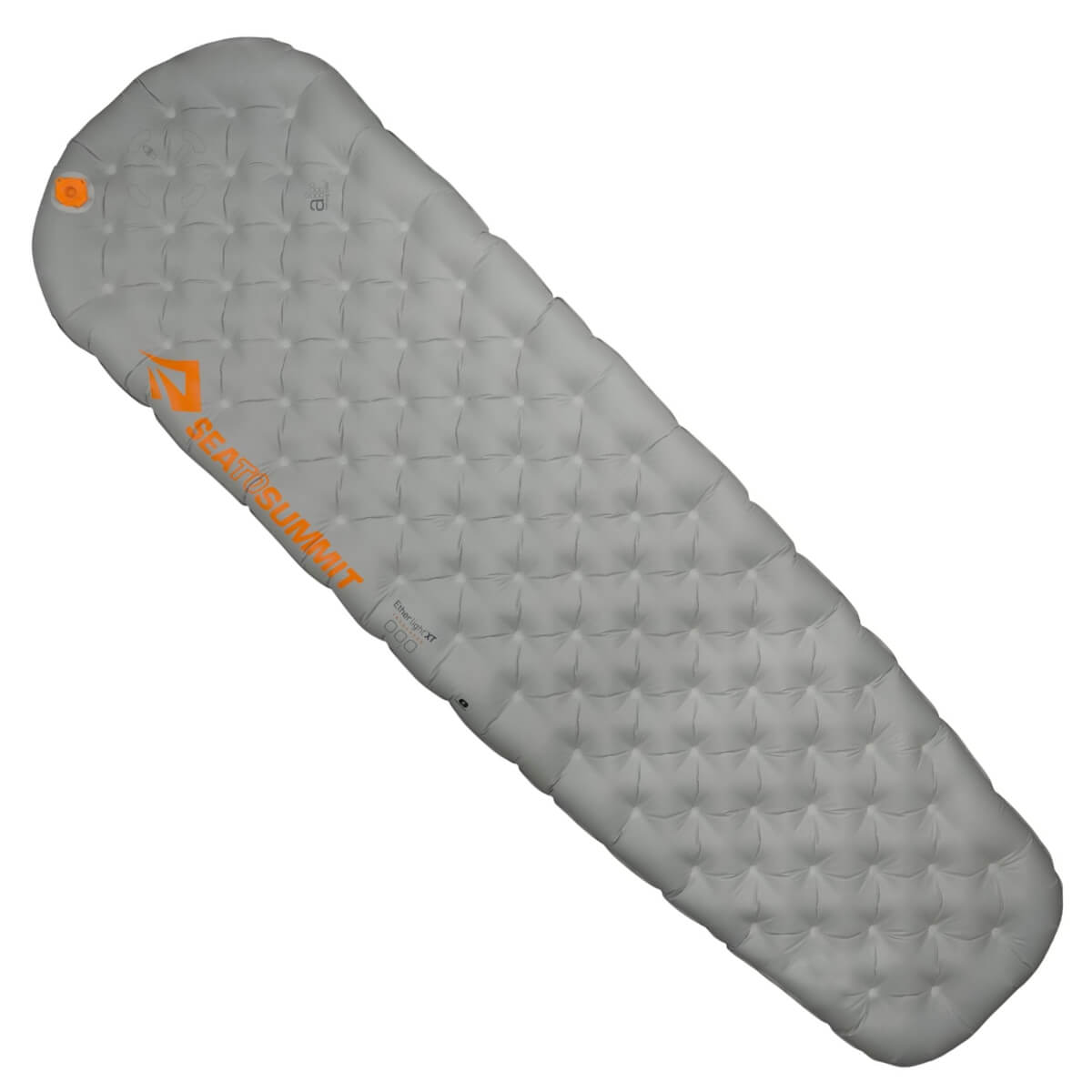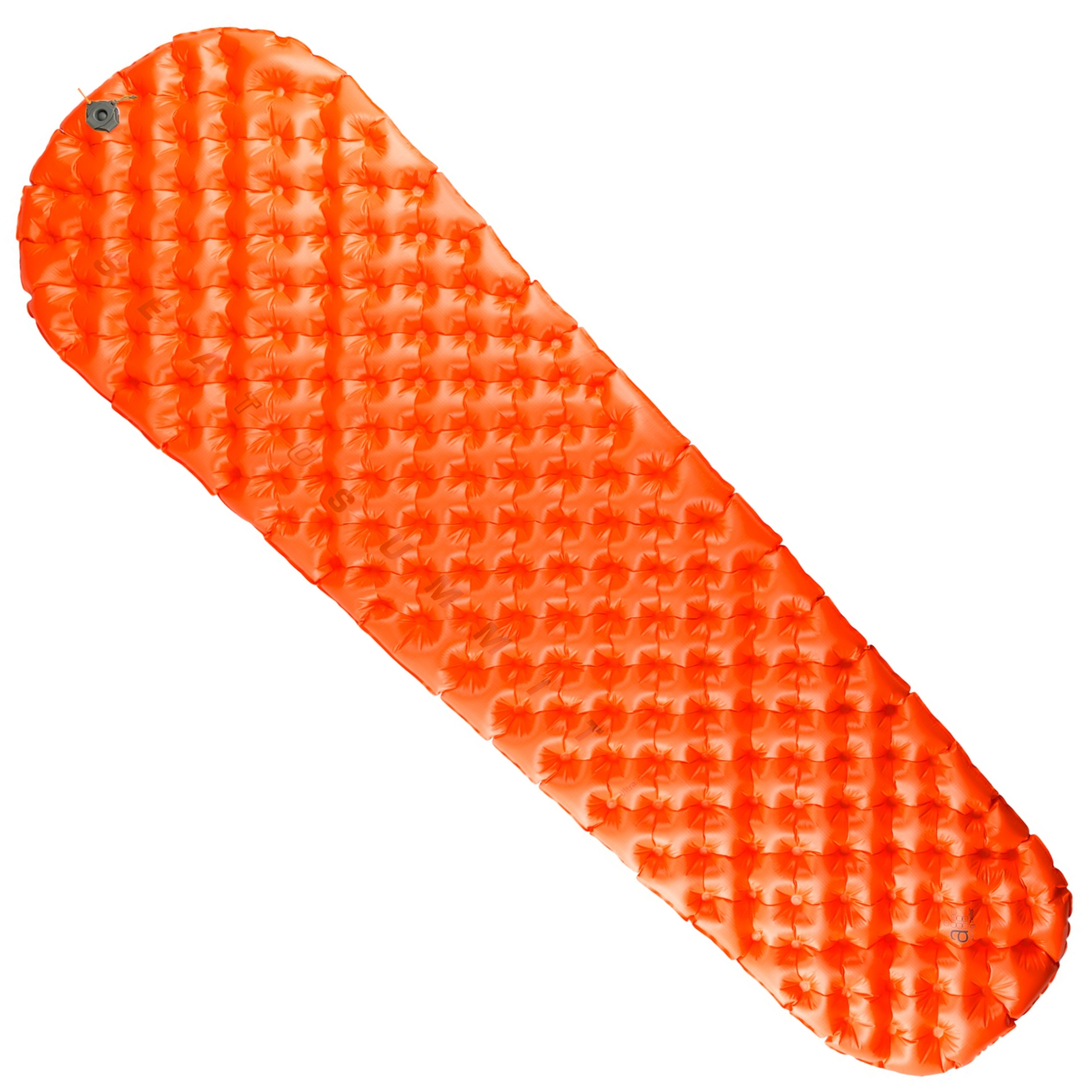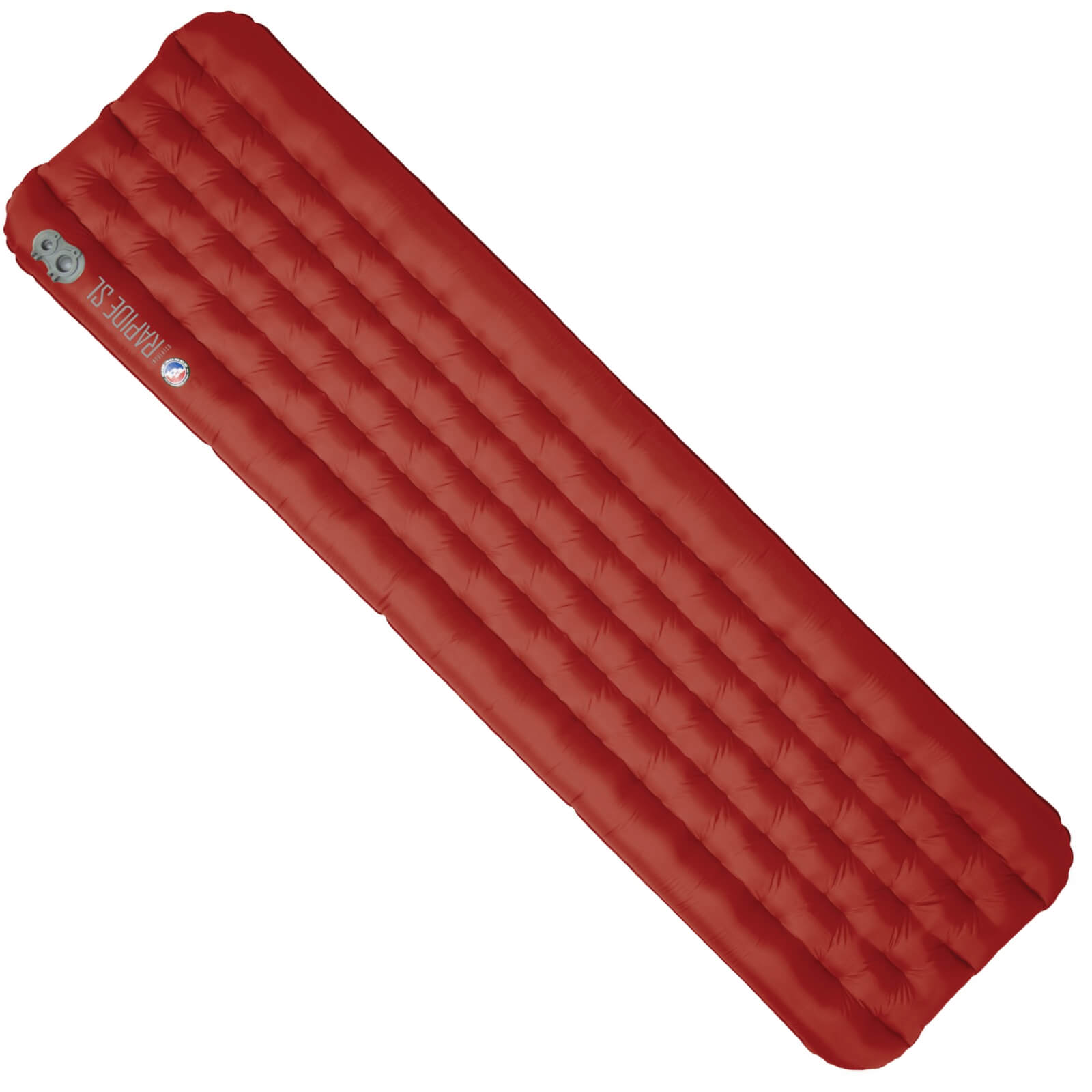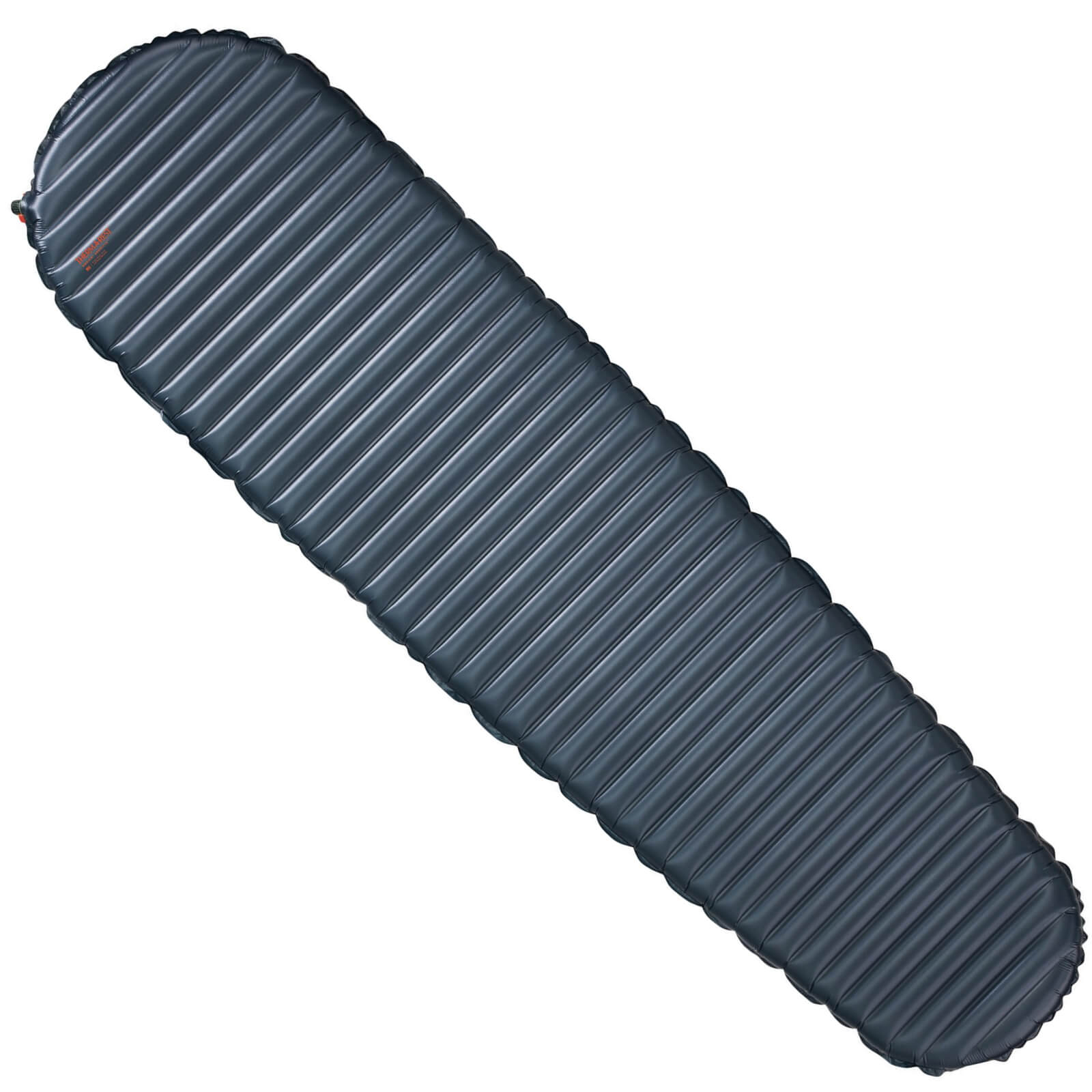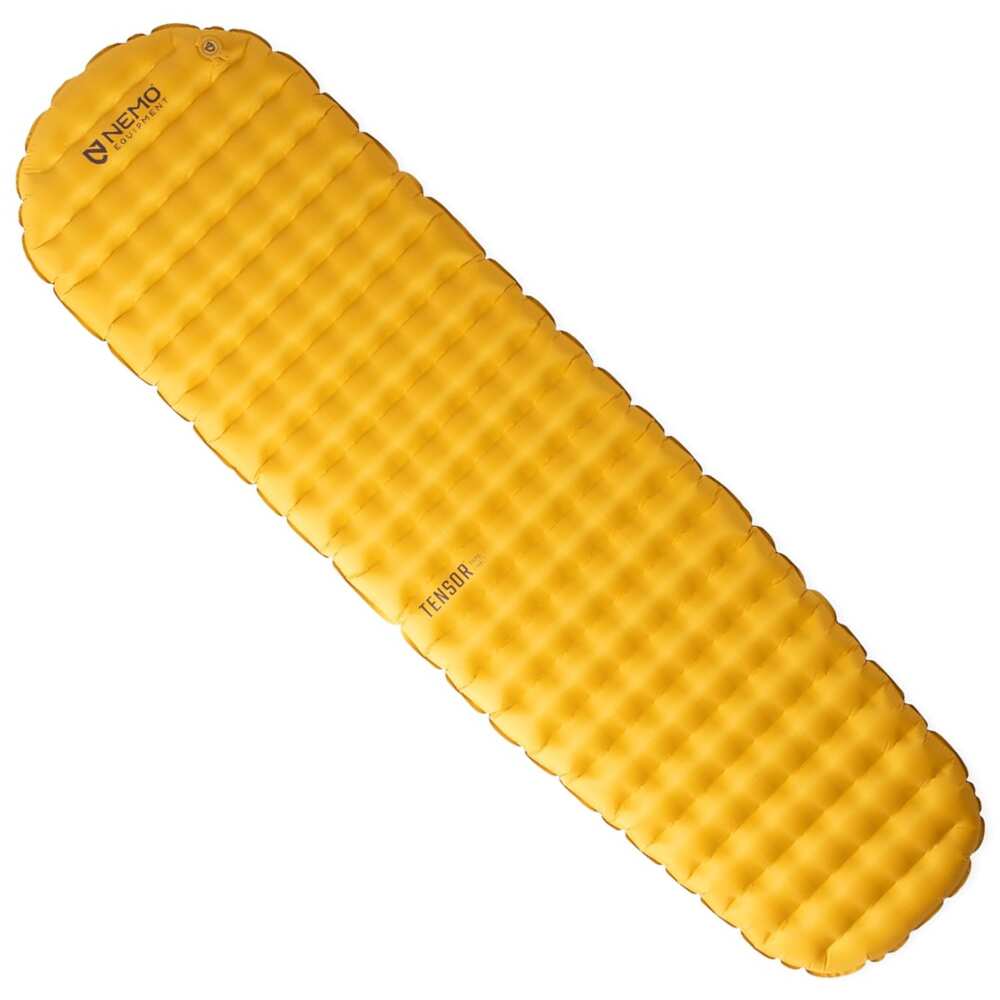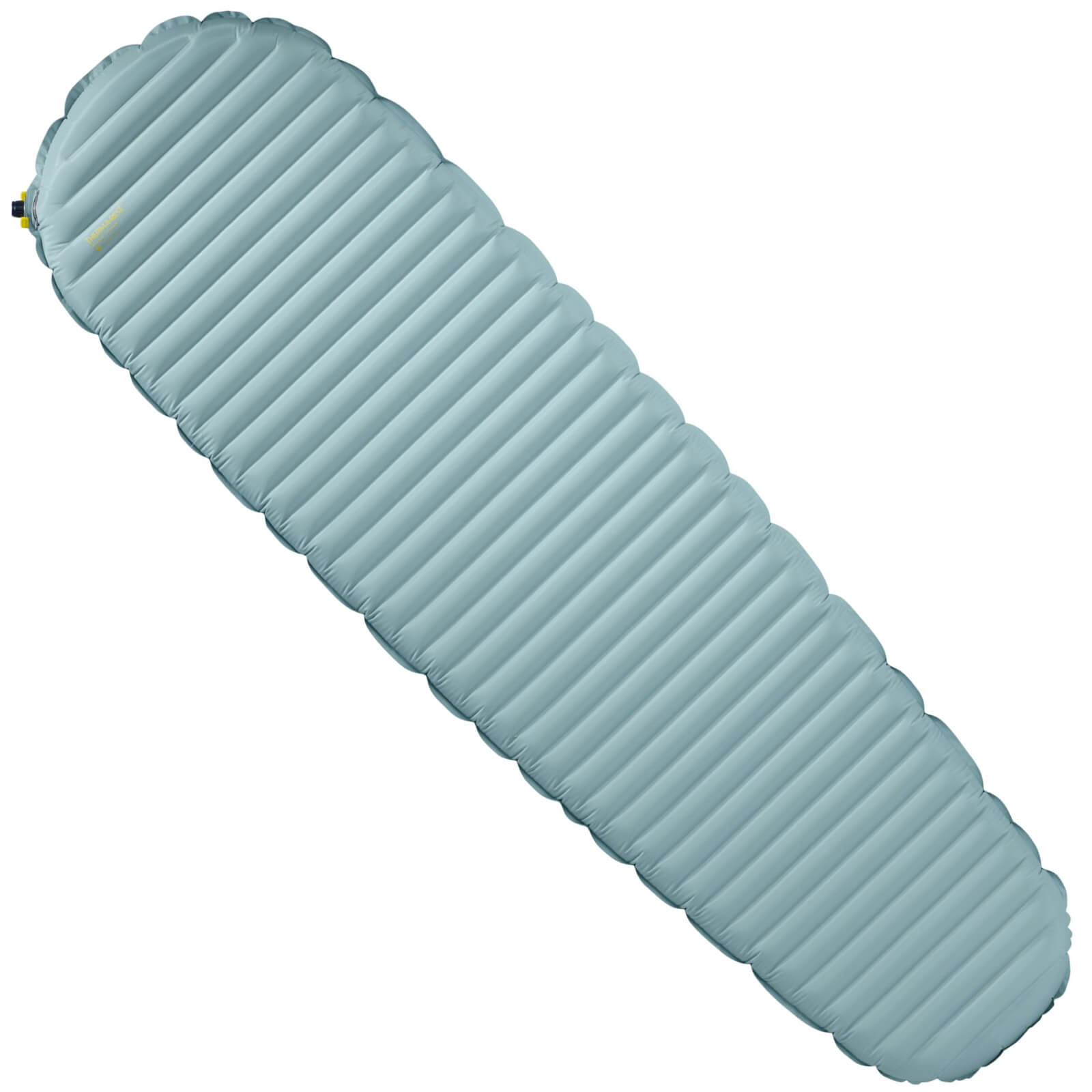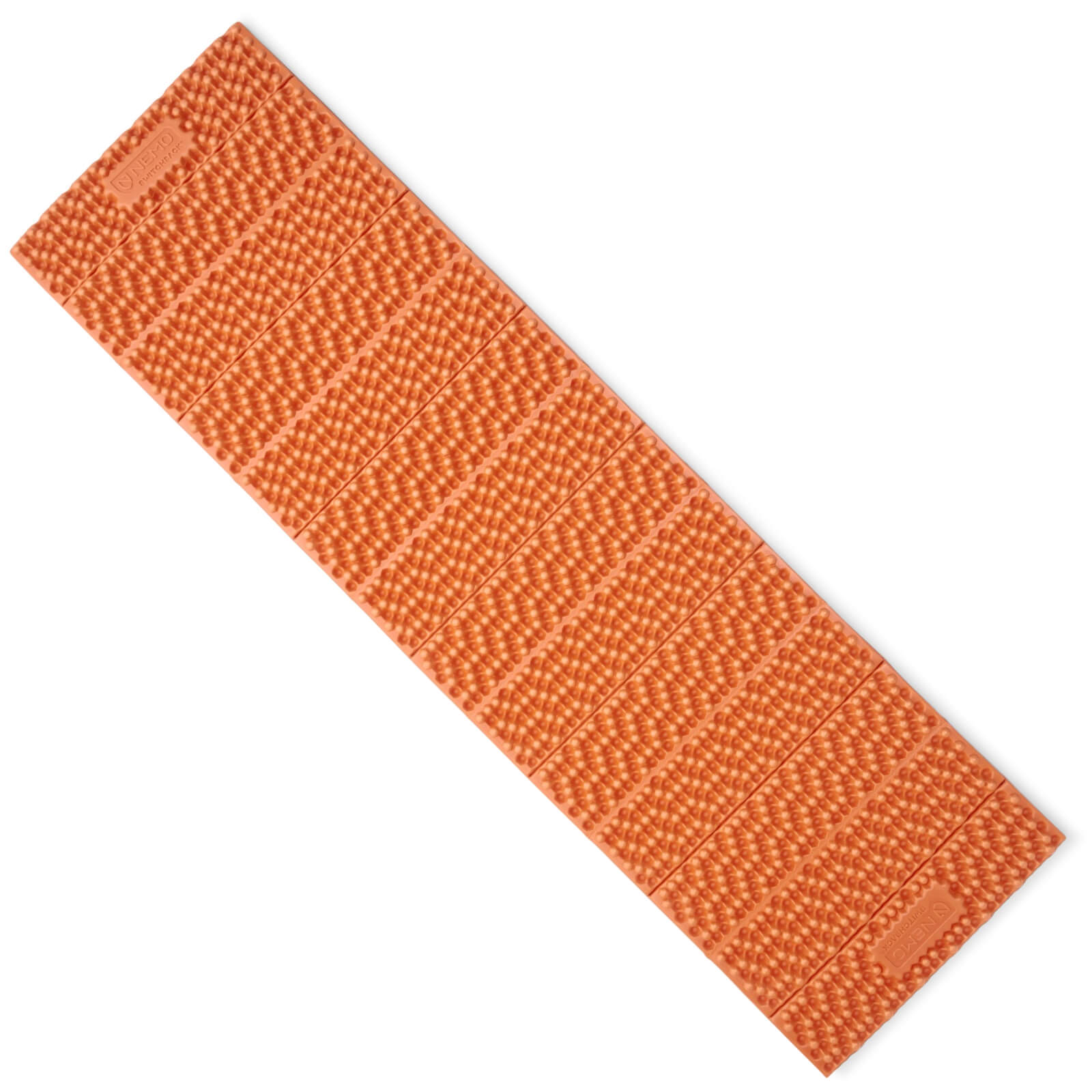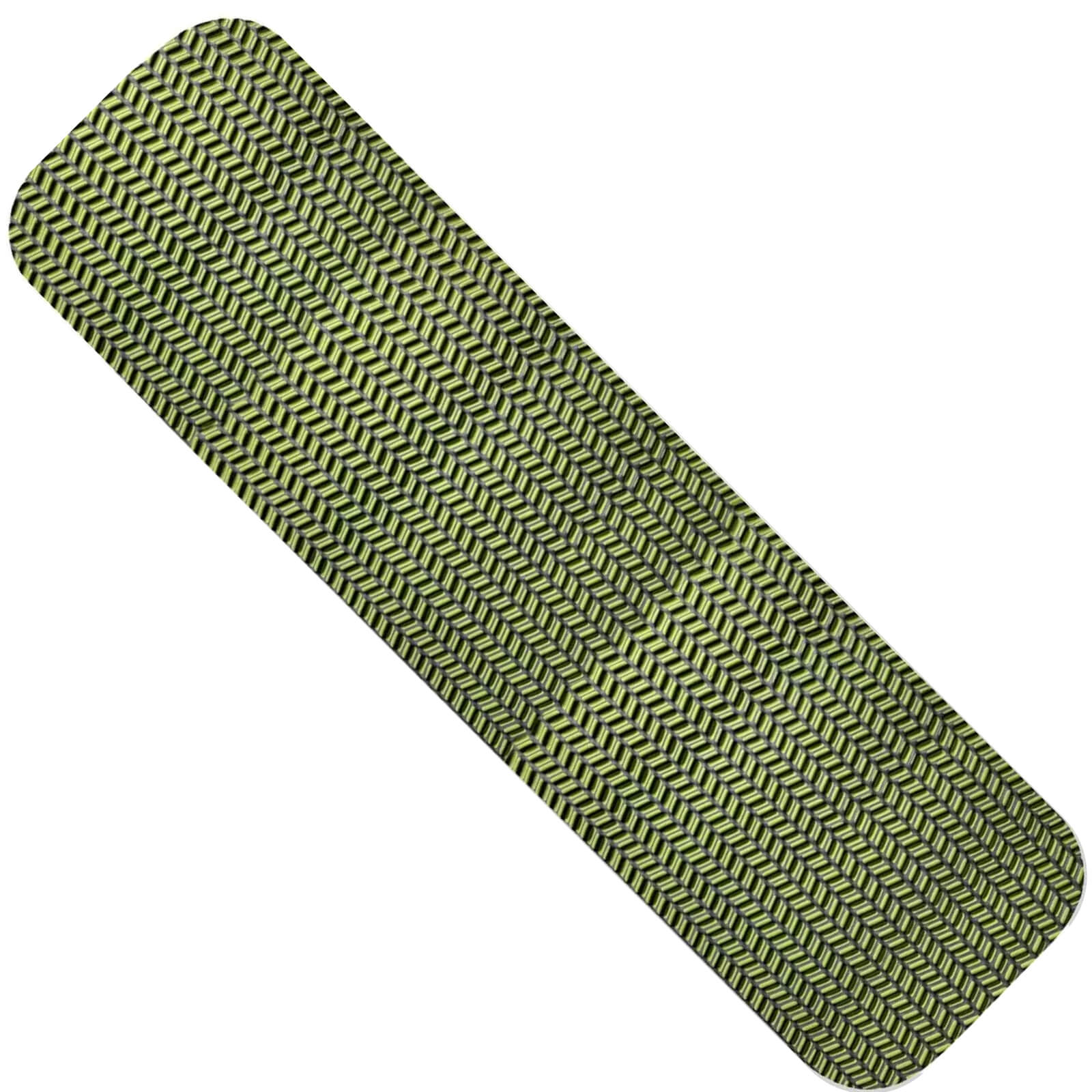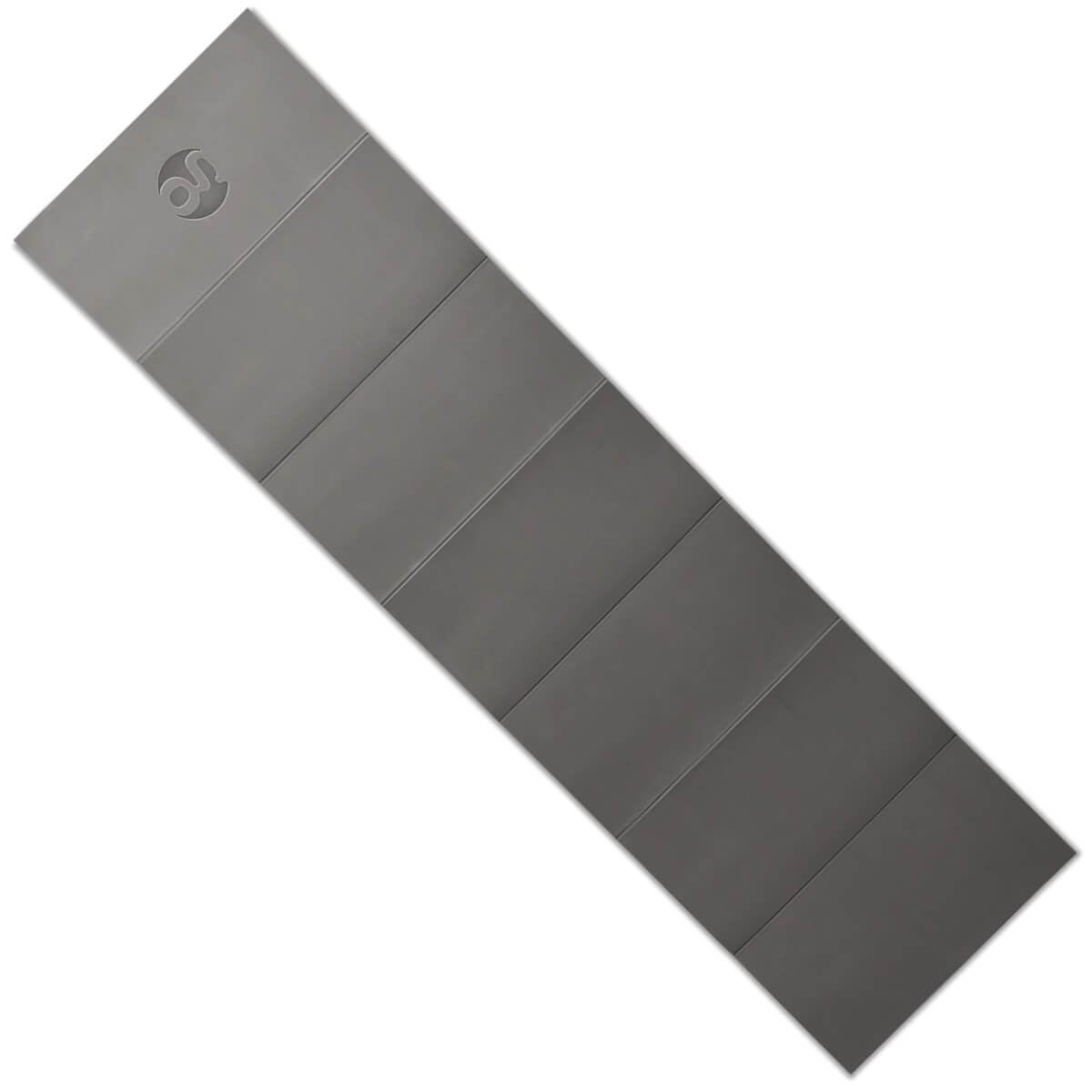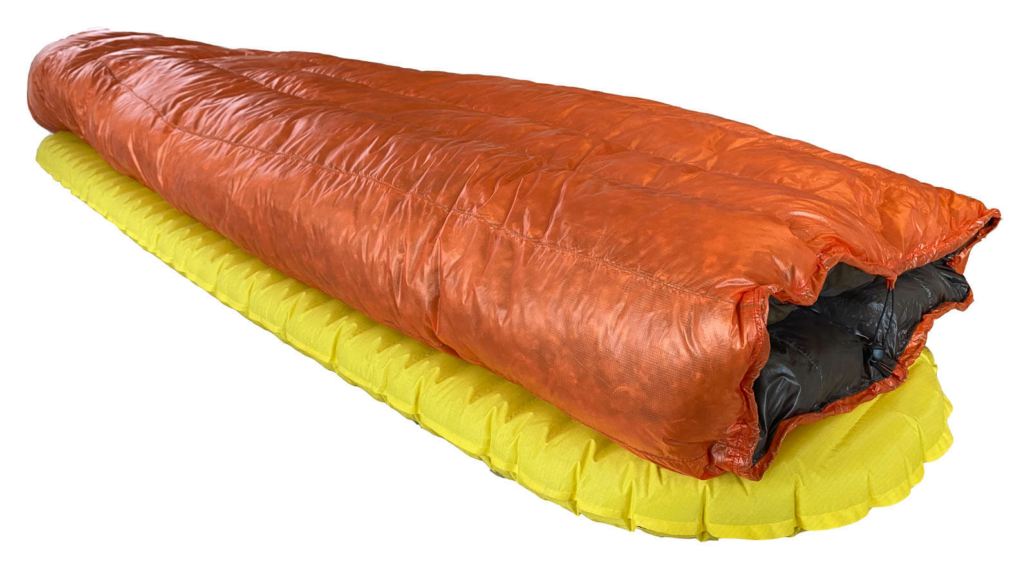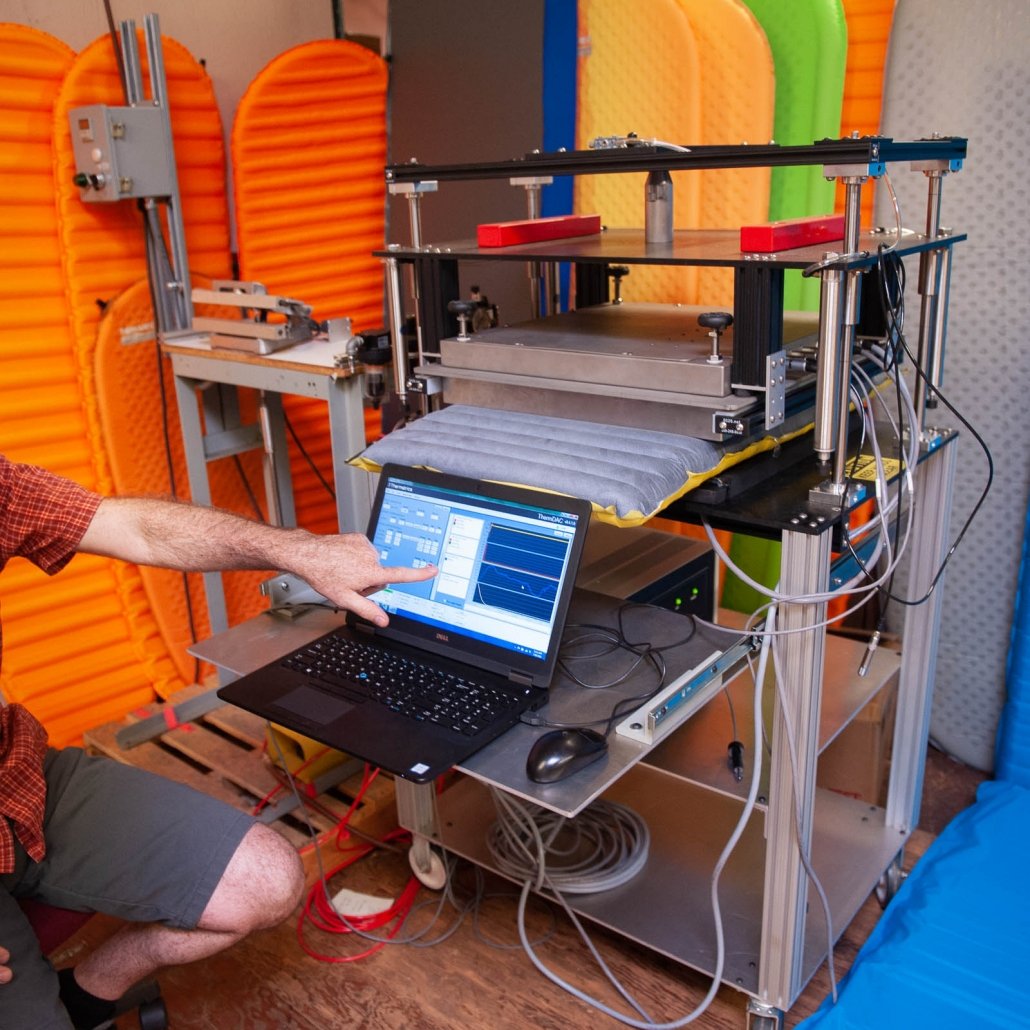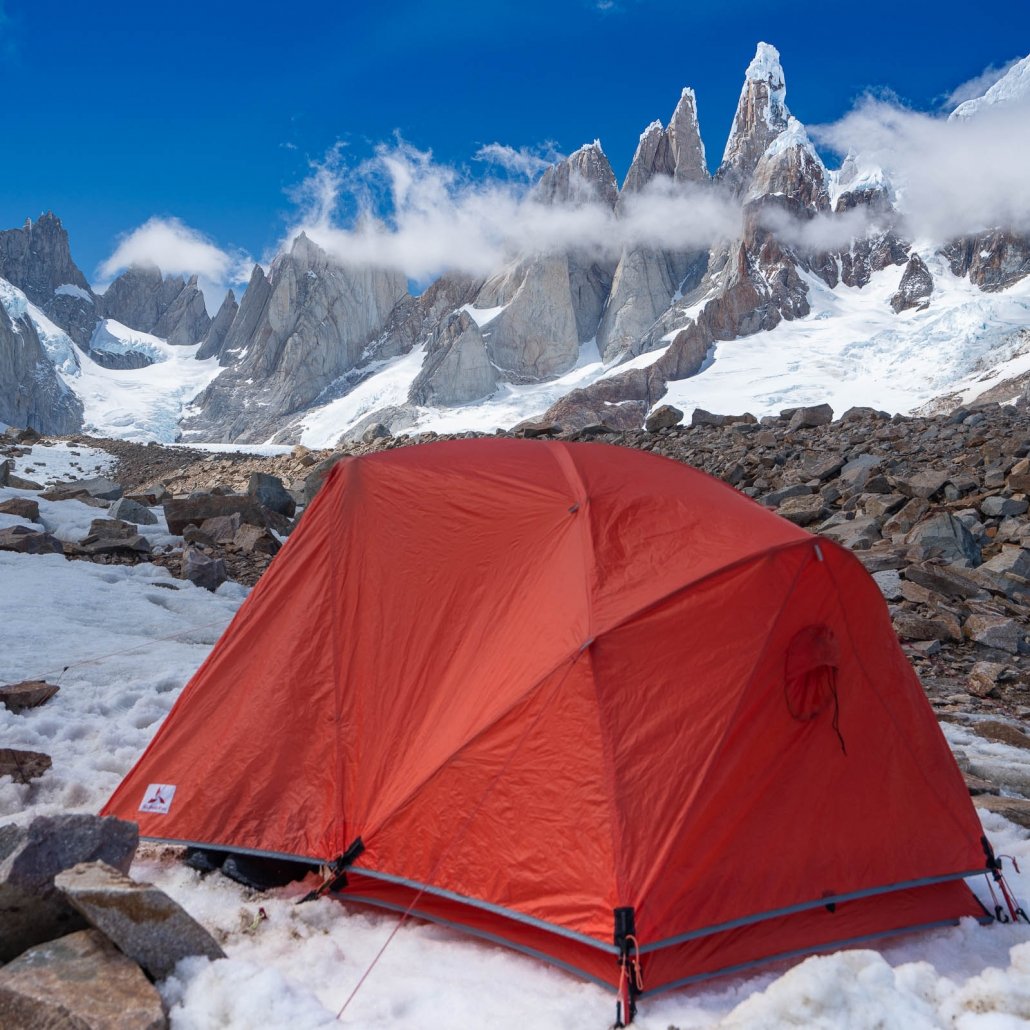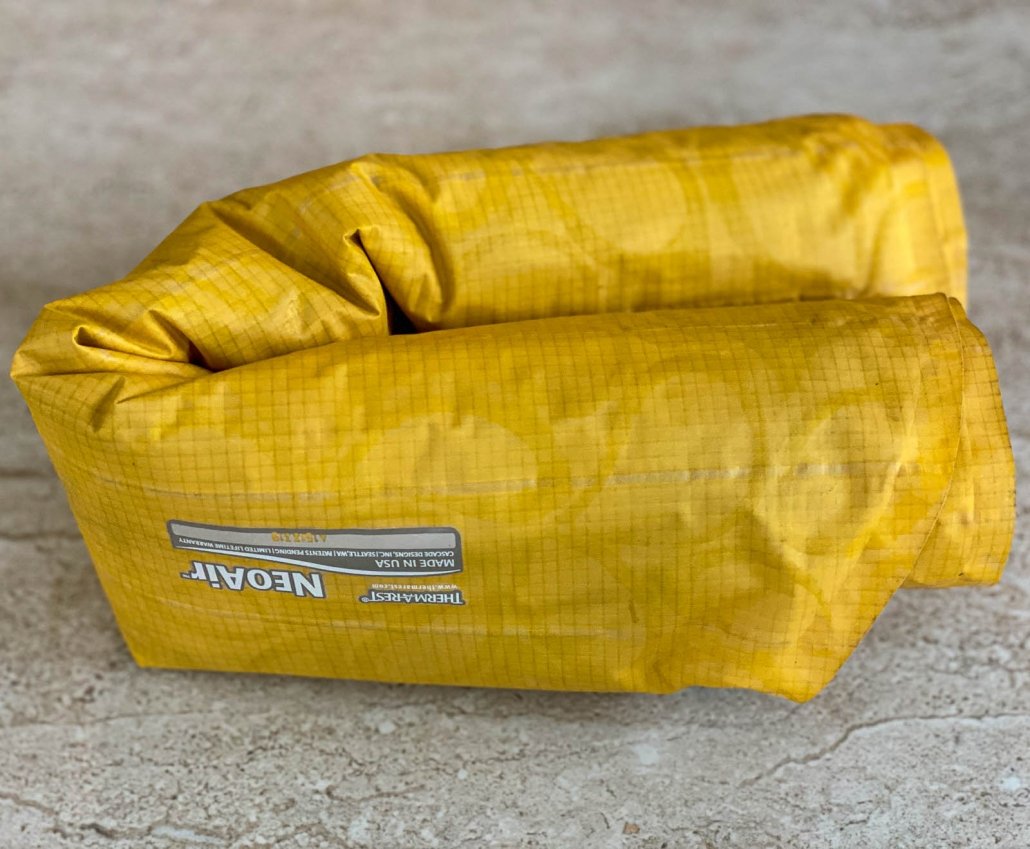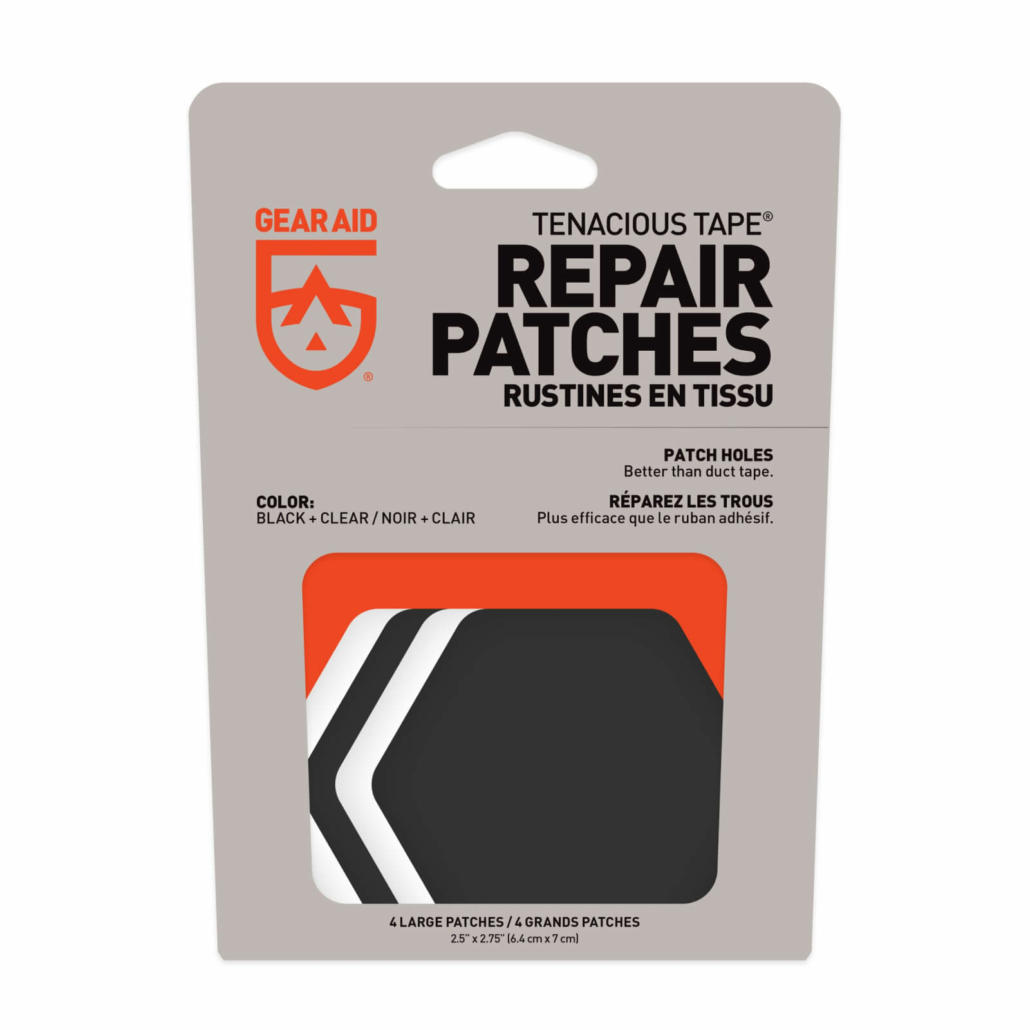Best Backpacking Sleeping Pad Ultralight 2024
Last Updated: February 29, 2024
Ultralight Backpacking Sleeping Pads with High R-Value-To-Weight-Ratio
Buying a comfortable, lightweight sleeping pad for backpacking is critical for a good night’s sleep in the outdoors. By keeping you warm and comfy at night and reducing weight in your pack, the best backpacking sleeping pads will improve your entire hiking experience. And we can’t stress enough how critical a good quality sleep is to your health and happiness in the backcountry. With better sleep comes more spring in your step, more alertness on the trail, and wider smiles all day long.
This is a data-informed buyers guide, and in it, we will showcase what we believe are the very best sleeping pads for backpacking on the market today. Our ultimate truth for measuring a pad’s performance is the R-value-to-weight ratio statistic, which tells us which backpacking sleeping pad uses its mass most effectively. This guide is grounded in decades of hiking gear review experience, and we analyze all sleeping pads through the lens of ultralight backpacking.
To fully optimize your sleep system, don’t miss our guides to the Best Ultralight Sleeping Bags, backpacking pillows, and Backpacking Quilts. You may also be interested in our guide to winter sleeping pads. Lead Photo by Sammy Spend, courtesy of Therm-a-Rest.
You make Adventure Alan & Co possible. When purchasing through links on our site, we may earn an affiliate commission at no additional cost to you. Here’s why you can trust us.
Choose Your Backpacking Sleeping Pad
- Editor’s Choice: Therm-a-Rest NeoAir XLite NXT
- Best Stats: NEMO Tensor All-Season Ultralight Insulated
- Top Pick: Big Agnes Zoom UL Insulated
- Most Comfortable: Sea To Summit Ether Light XT Insulated
- Best Value>Weight>Comfort: Sea To Summit Ultralight Insulated Air
- Best Value>Comfort>Weight: Big Agnes Rapide SL Insulated
- Best Super Ultralight: Therm-a-Rest NeoAir UberLite
- Best For Summer: NEMO Tensor Trail Ultralight Insulated
- Best Below Freezing: Therm-a-Rest NeoAir XTherm NXT
- Best Foam Pad: NEMO Switchback
- Best Sustainability: Big Agnes TwisterCane BioFoam
- Best Supplemental: Gossamer Gear Thinlight
Comparison Table
Price and weight stats reflect the standard mummy shape/size for each pad, or the non-wide rectangle when no mummy is available.
| Sleeping Pads | Price ($) | Weight (oz) | R-Value | R-Val/oz |
| Therm-a-Rest NeoAir XTherm NXT | 240 | 16 | 7.3 | 0.46 |
| NEMO Tensor All-Season UL IN | 200 | 14.1 | 5.4 | .38 |
| Therm-a-Rest NeoAir XlLite NXT | 210 | 13.0 | 4.5 | 0.35 |
| Big Agnes Zoom UL Insulated | 180 | 14.0 | 4.3 | 0.31 |
| Therm-a-Rest NeoAir Uberlite | 230 | 8.8 | 2.3 | 0.26 |
| NEMO Tensor Trail UL IN | 180 | 13.0 | 2.8 | 0.22 |
| Big Agnes Rapide SL Insulated | 150 | 19.0 | 4.2 | 0.22 |
| Sea to Summit Ultralight Insulated Air | 159 | 16.9 | 3.1 | 0.18 |
| Sea to Summit Ether Light XT Insulated | 199 | 17.3 | 3.2 | 0.18 |
| Gossamer Gear Thinlight | 32 | 3.3 | 0.5 | 0.15 |
| NEMO Switchback | 55 | 14.5 | 2.0 | 0.14 |
| Big Agnes TwisterCane BioFoam | 50 | 14 | 1.7 | 0.12 |
Editor’s Choice Backpacking Sleeping Pad
Therm-a-Rest NeoAir XLite NXT Sleeping Pad
New for 2023, the Therm-a-rest NeoAir XLite NXT (shop now) is currently the undisputed best performance sleeping pad for backpacking that money can buy, and it has no equal. It is statistically superior in almost every way and across all measurements when compared to all other sleeping pads. Read more in our full-length Therm-a-Rest NeoAir XLite NXT Review.
- Price: $210
- Weight: 13 oz
- R-Value: 4.5 | R-Value/Weight: .35
- Thickness: 3”
- Fabric: 30d
- Sizes: Regular Short, Regular, Regular Wide, Large
- Pros: Comfy. Thick. Ultralight. Very High R-Value-to-weight.
- Cons: Expensive.
Features
NXT’s R-Value of 4.5 is one of the highest among three season pads, and with a weight of only 13.0 oz, it’s also one of the very lightest. It’s so far ahead of the pack, that compared to the second best sleeping pad, its R-value-to-weight ratio is 24% higher.
XLite NXT is no slouch on comfort either. Now with an additional half inch of thickness compared to the original, XLite NXT is 3” thick, which means you can basically ignore small roots and divots in the ground, and side and back sleepers will be happier. And what’s more, compared to previous editions, it’s designed to be much quieter.
While it’s definitely still a bit crinkly, we’d describe the overall volume as average and acceptable. At time of publishing, Therm-a-Rest states it is six times quieter than the original XLite on their homepage. While it did get noticeably quieter, our experience did not indicate 6X.
Inflation with NXT can be a bit of a chore considering how thick the pad is. But the “winglock” valve is excellent, and you don’t have to constantly tighten it in between breaths or pumps. The 30D fabric is very durable, and you shouldn’t have any problems so long as you aren’t using it on scratchy surfaces.
Verdict
This is the best overall sleeping pad for backpacking that has ever been manufactured, and we can’t wait for you to try it out! Enjoy!
Best Stats
NEMO Tensor All-Season Ultralight Insulated Sleeping Pad
Wow, the NEMO Tensor All-Season Ultralight Insulated is a dang impressive sleeping pad. With an R-Value of 5.4, and weighing only 14.1 oz, it clocks the highest R-Value-to-weight-ratio among 3-season pads, narrowly beating out the esteemed Therm-a-Rest NeoAir XLite NXT, despite being an ounce heavier in total.
- Price: $200
- Weight: 14.1 oz
- R-Value: 5.4 | R-Value/Weight: .38
- Thickness: 3.5”
- Fabric: 20d/40d
- Sizes: Regular, Regular Mummy, Regular Wide, Long Wide
- Pros: Incredibly high R-to-weight ratio. Comfy. Thick. Quiet. Stable. Ultralight.
- Cons: Expensive. Arguably too insulated for warm summer nights.
Construction & Features
What makes the makes the Tensor All-Season so effective is its dual layers of suspended thermal mirror film, the same tech that insulates NeoAir pads. Their floated placement keeps them from making too much crinkly noise as you move about on your pad.
The SpaceFrame baffles are stable and comfortable to sleep on and do a fair job of dispersing pressure. It does not feel like sleeping on a surf board. And with 3.5″ of thickness, this pad doesn’t give a hoot about roots or other small lumps.
One issue that had plagued NEMO’s Tensor series was durability. However, they appear to have resolved this by upgrading the underside from 20d to 40d face fabric.
Perhaps the only thing that isn’t best-in-class about this sleeping pad is its total weight. While far lighter than average, 14.1 oz is still a smidge heavier than NeoAir, and not particularly innovative.
Verdict
Our first impression is that NEMO Tensor All-Season is poised to take the backpacking sleeping pad crown. And with best in class R-value, R-value-to-weight-ratio, thickness, quietness, and comfiness, it’s hard to argue.
Top Pick Backpacking Sleeping Pad
Big Agnes Zoom UL Insulated Sleeping Pad
The Big Agnes Zoom UL Insulated is a top tier backpacking sleeping based on statistical comparisons. And it’s $20-30 less expensive than our other top picks from NEMO and Therm-a-Rest. Great value!
- Price: $180
- Weight: 14.0 oz
- R-Value: 4.3 | R-Value/Weight: .31
- Thickness: 3.25-3.5″ | Fabric: 20D Recycled high-tenacity nylon
- Sizes: Reg, Wide, Wide Long
- Pros: Good value. Lightweight. Thick. Comfy. Eco-Friendly. High R-value. Cradle bumper.
- Cons: Expensive. Second best.
Features
For starters, the Zoom UL Insulated smokes nearly all of its competitors when it comes to R-Value (4.3) and R-Value-to-weight ratio (.31), our most important stat for measuring sleeping pad performance. Among 3-season sleeping pads, it is second only to Therm-a-Rest NeoAir XLite NXT and NEMO Tensor All-Season. This alone netted it our accolades as third best overall pad and is achieved with two layers of heat reflective film laminated to the inside.
But it’s killer design in more ways than one. Big agnes designs the perimeter chamber with an extra .25″ of thickness. This provides a cradling effect for the sleeper, and acts as a sort of haptic bumper to keep you centered and situated. A nice feature!
It’s fairly average when it comes to volume while using – not the loudest, not the quietest. Comfort is relatively subject, but the surface texture is nice and most users seem to agree it’s top notch and similar to the NEMO tensor. We also love that this one is made with post-consumer recycled nylon fabric. Big Agnes does the earth a solid on this one.
Verdict
This is a seriously excellent sleeping pad and clearly top tier. While expensive, it’s $20-30 less than others in its performance class.
Most Comfortable Lightweight
Sea To Summit Ether Light XT Insulated
The Ether Light XT Insulated is our pick for the comfiest sleeping mat for backpackers. What stands out about this model are its four inches of thickness and Air Sprung Cells, which effectively disperse pressure, especially for side sleepers. While we aren’t particularly impressed by its R-Value, campers who prioritize comfort should definitely consider this model for 2+ season conditions. See more in our full-length Sea To Summit Ether Light XT Insulated Review.
- Price: $199
- Weight: 17.2 oz
- R-Value: 3.2 | R-Value/Weight: .18
- Thickness: 4”
- Fabric: 30d/40d
- Sizes: Small, Regular, Large, Regular Rectangle Wide, Large Rectangle
- Pros: Extra comfy and thick. Disperse pressure well. Lots of size options. Pillow lock feature.
- Cons: Expensive. Mid-tier R-value. Light-not-ultralight.
Features
Even when comparing to other models in our roundup of the best sleeping pads, the four inch thick Sea To Summit Ether Light XT Insulated is thicker than average. Combine that with the pleasantly rounded Air Sprung Cells and you have a recipe for exceptional comfort. This surface absorbs weight more comfortably than most. Whether you sleep on your side or your back, or your stomach, your body will feel comfier on this mat. And you can choose from any one of five sizing options to fit your preferences!
But there’s even more to love about this chassis. We nod to the 21.5″ width of the size regular, which 1.5″ wider than average. The slightly enlarged side baffles also help center the sleeper on the pad, and prevent roll off. The pillow lock features is nifty too. This pad comes with velcro tabs that attach to the head end and your pillow to prevent it from sliding around in the night.
However, it’s not all gravy and cherries on top. At $199 for the size regular, this is one of the most expensive sleeping pads available, yet it has a middling R-Value of 3.2 (good for 2+ season use) and middling weight of 17.2 ounces. Given the premium price tag, we wish it were a little lighter and a little warmer.
Verdict
It may not have the most impressive stat line, but Sea to Summit Ether Light XT Insulated disperses weight pressure and delivers a comfier rest than most other pads. We recommend this 4″ thick pad for 2+ season backpacking trips when comfort is prioritized above weight and R-value.
Best Value > Low Weight > Comfort
Sea to Summit Ultralight Insulated Air Sleeping Pad
If you just want a good lightweight sleeping pad for backpacking at a reasonable price, the Sea to Summit Ultralight Insulated Air Sleeping Pad is our recommendation for best value.
Notably, in the $150 price range, you have to choose between low weight and high comfort. You don’t get both at once like with the premium models. This model prioritizes value, then weight, then comfort.
- Price: $159
- Weight: 16.9 oz
- R-Value: 3.1 | R-Value/Weight: .18
- Thickness: 2”
- Fabric: 40d/30d
- Sizes: X-Small, Small, Regular, Large
- Pros: Good value. Lightweight. Durable.
- Cons: Mid-tier R-value. Thin. Cold Spots.
Features
But Ultralight Insulated Air is still a pretty good backpacking sleeping pad in all regards. It has durable fabric, a passable R-Value, a reasonably low weight, and at 2”, is thinner than the average inflatable, but just thick enough to reap most of the comfort benefits.
While it is 40% less expensive than the top model, Therm-a-Rest NeoAir XLite NXT, it is also 35% heavier, 45% less warm, and 50% thinner. So you get what you pay for. However, when compared to other models in its price range. Ultralight Insulated Air is notably lighter weight, but a bit undergunned in terms of warmth and thickness.
Lastly, outside of true summer conditions, we don’t recommend this backpacking sleeping pad to quilt sleepers, as the baffling pattern can have cold spots underneath, and the R-Value isn’t quite there.
Verdict
All in all, Sea to Summit Ultralight Insulated Air is a solid, if not spectacular, sleeping pad for backpacking at a good price and we recommend it if you’re value shopping for something lightweight.
Best Value > Low Comfort > Weight
Big Agnes Rapide SL Insulated Sleeping Pad
Big Agnes Rapid SL Insulated Sleeping Pad is the comfiest pad in the mid-tier price range that is also under 20 oz, and we’re pleased to recommend it.
- Price: $150
- Weight: 19 oz
- R-Value: 4.2 | R-Value/Weight: .22
- Thickness: 3.5”
- Fabric: 40d
- Sizes: Short, Regular, Wide, Long, Wide Long
- Pros: Good value. Comfy. Thick. High R-Value.
- Cons: Mid-weight.
Features
Rapide SL prioritizes value, then comfort, then weight. It is the yin to the yang of our lightweight value pick, the Sea to Summit Ultralight Insulated air. Compared to the best overall sleeping pad for backpacking, Therm-a-Rest NeoAir XLite NXT, the Rapide SL is 40% less expensive, 52% heavier, 17% thicker, and 7% less warm.
For the middling price of $150, this sleeping pad has top tier R-Value (4.2), and is the thickest pad in our guide at 3.5,” and that’s not even counting the extra high rim baffles that are 4.25” thick. Needless, to say, this one is heckin’ comfy and it’s extra work to inflate.
But it comes at a cost. Rapide SL Insulated weighs 19 oz. This is not technically even a lightweight sleeping pad, though it falls on the lighter end of med-tier weight.
A few other things to note. The vertical baffling channels are interesting, but we’re not sure that we prefer them to other configurations. Luckily, thickness and R-value play a much more important role to overall comfort.
If you’re a quilt user who is value shopping, this would be a better pick than the Sea to Summit Ultralight Insulated Air, since the R-value is higher and there is less cold spotting.
Verdict
Considering it as a value pick, we think Big Agnes Rapide SL Insulated is the most comfortable sleeping pad for backpacking that still keeps its weight in reasonable check.
Best Super Ultralight Sleeping Pad
Therm-a-Rest NeoAir UberLite Sleeping Pad
Weighing less than 9 oz with 2.5″ of thickness, the Therm-a-Rest NeoAir Uberlite is a statistically impressive ultralight sleeping pad for backpacking, and the lightest weight on our list. However the super ultralight performance comes with the downside of being delicate and less than optimally warm.
- Price: $230
- Weight: 8.8 oz
- R-Value: 2.3 | R-Value/Weight: .26
- Thickness: 2.5”
- Fabric: 15d
- Sizes: Regular, Regular Wide, Large
- Pros: Very ultralight. Good R-Value to weight.
- Cons: Expensive. Delicate. Low total R-Value. Noisy.
Features
UberLite is a good backpacking sleeping pad to have in your quiver for warm conditions and high mileage days. However, the 15d fabric makes it the least durable in our guide, and so we think it should be used sparingly and intentionally on high intensity trips, rather than be considered as a daily driver.
At 2.5″ of thickness, it’s as comfortable as previous editions of the NeoAir series. But unlike XLite or XTherm, it’s much less insulated. With a R-Value of 2.3, UberLite it’s passably warm in summer, but quilt users in particular should avoid this sleeping pad if they expect temps to drop into the 30s as it will just feel a bit cold.
We also note that this is a loud backpacking sleeping pad in terms of crinkliness. It has not yet been graced with an NXT update for improved quietness.
Verdict
The Therm-a-Rest NeoAir UberLite is a rare inflatable ultralight sleeping pad for backpacking, but it is not without its flaws. The low R-Value and low durability mean we can only recommend it for specific summer fastpacking-type use cases. But in those instances, those willing to fork over a high asking price are unlikely to find a better fastpacking sleeping pad.
Best Summer Sleeping Pad
NEMO Tensor Trail Ultralight Insulated
The updated-for-2024 NEMO Tensor Trail Ultralight Insulated sleeping pad appears to be a merger replacement between the previous ultralight insulated and non-insulated Tensors, and now includes the word “Trail” in its name. This is a great summer sleeping pad.
- Price: $180
- Weight: 13 oz
- R-Value: 2.8 | R-Value/Weight: .22
- Thickness: 3.5”
- Fabric: 20d/40d
- Sizes: Regular Mummy, Regular, Regular Wide, Long Wide
- Pros: Comfy. Thick. Ultralight. Very High R-Value-to-weight.
- Cons: Low R-value.
Construction & Features
What makes this a great backpacking sleeping pad for summer is its middling 2.8 R-Value. That’s generally too low for quilt users and cold weather, but perfectly acceptable for warmer conditions. If you’ve ever been too hot and gotten sweaty on a sleeping pad, that’s why you might choose this one.
What insulation there is is provided by a single floating thermal mirror sheet, suspended so as not to be loud and crinkly. The Spaceframe baffles do a good job with stability and weight dispersal. Most people will find this pad to be comfier than average.
Previous iterations of the Tensor sleeping pads were plagued by durability issues, but the new range all have 40d nylon undersides, double the fabric weight of previous versions. This is a very important update.
Verdict
The 13 oz weight is about as ultralight as you can reasonably hope for in a full size inflatable pad, and the NEMO Tensor Trail Ultralight Insulated is comfy, quiet, and warm enough for most summer conditions.
Best Sub-Freezing Sleeping Pad
Therm-a-Rest NeoAir XTherm NXT Sleeping Pad
Like its 3 season sibling, the winter grade Therm-a-Rest NeoAir Xtherm NXT is the best cold weather sleeping pad for backpacking that has ever existed. It is our number one recommendation for what you should sleep on in temps below freezing.
- Price: $240
- Weight: 16 oz
- R-Value: 7.3 | R-Value/Weight: .46
- Thickness: 3”
- Fabric: 30d
- Pros: Warmest. Comfy. Thick. Highest R-Value-to-Weight. Lightweight.
- Cons: Very expensive. Too warm for summer.
Features
The 7.3 R-value is one of the highest we’ve ever seen, and the fact that it weighs only 16 ounces means it has the best R-value-to-warmth ratio of all time. No other lightweight sleeping pad has ever been this warm for such a low weight.
As of 2023, XTherm got the same makeover as XLite, in that it is a half inch thicker, and notably quieter. It has the same great winglock valve. It also has a 70d bottom surface for supreme durability, and a respectable 30d on the top. It’s now light blue.
While XTherm is simply too warm for summer backpacking, this is still technically a three season backpacking sleeping pad in the sense that it’s usable from fall through spring. But yeah, we don’t recommend it as a daily driver. If you were to only own one sleeping pad, we definitely recommend the XLite over the XTherm
Verdict
Nonetheless, XTherm is an incredible cold weather specialist with the best all-time weight-to-R-value, and an incredibly useful arrow to have in your backpacking sleeping pad quiver.
Best Backpacking Sleeping Pad – Foam
NEMO Switchback Sleeping Pad
If you’re in the market for a sleeping pad for backpacking that is highly affordable and/or unpuncturable, we recommend the NEMO Switchback Sleeping Pad because it has the best blend of thickness, weight, and R-Value.
- Price: $55
- Weight: 14.5
- R-Value: 2 | R-Value/Weight: .14
- Thickness: 0.9”
- Material: Closed-cell Foam
- Sizes: Regular, Short.
- Pros: Very affordable. Ultralight. Puncture-proof. Versatile.
Cons: Low R-value. Thin.
Features
With 0.9 inches of thickness, it beats out the more popular Therm-a-Rest Z Lite Sol in that regard by 20%, while only weighing 4% more. The Switchback achieves this by taking advantage of “more precise tooling” to create taller nodes for a more plush experience.
Thanks to its metallized thermal reflective film, the Switchback has an R-Value of 2, which is on the low end, but comparable to the average non-insulated sleeping pad for backpacking.
Foam mattresses are chunky and voluminous, and the Switchback is much larger than the typical inflatable pad, even when packed. However, the aforementioned, “precise tooling,” helps alleviate this somewhat by decreasing dead space in between nested nodes when it’s in accordion mode.
Furthermore, compared to budget inflatable mattresses in the under $100 category, closed cell foam tends to be warmer, lighter, longer lasting, more durable, and more versatile, though at the cost of a tad less comfort due to its thinness.
The best part of closed cell foam is that lightweight sleeping pads like the NEMO Switchback can fearlessly be used for lounging outside of the tent, even on abrasive, rocky surfaces that could puncture an inflatable. While they are almost objectively less warm and less comfortable for actual sleeping (especially for side sleepers), they are far superior for lounging.
While individuals scrapes and abrasions have little effect on foam pads, they start to add up over time and, in addition to repeated compressions from sleep use, results in a thinning effect on the foam that causes it to slowly lose thickness and R-value.
Verdict
We recommend the NEMO Switchback to the following people. Backpackers who are: (1) on a strict budget; (2) regularly camp with their dog; (3) are hard on their gear; (4) need a backpacking sleeping pad that is unpoppable; (5) ideally aren’t side sleepers.
Best Backpacking Sleeping Pad – Sustainability
Big Agnes TwisterCane BioFoam Sleeping Pad
From a pure performance perspective, the Big Agnes TwisterCane BioFoam (what a name!) backpacking sleeping pad is the least appealing model on our list. However, the fact its closed cell foam structure is manufactured from sugarcane is very compelling from a sustainability perspective, so we’ll be testing it out this season.
- Price: $50
- Weight: 14 oz
- R-Value: 1.7 | R-Value/Weight: .12
- Thickness: .5”
- Material: Closed-cell Foam
- Sizes: Regular
- Pros: Very affordable. Ultralight. Puncture-proof. Versatile. Biobased. Eco-friendly.
- Cons: Very very thin. Lowest R Value. Least comfortable.
Features
The product listing states that the EVA foam is created with 60% sustainably grown sugar cane using a process that removes carbon from the atmosphere. That’s pretty dang cool sustainable tech for a lightweight sleeping pad for backpacking. We know backpackers care about protecting the earth and we thank them for it!
TwisterCane BioFoam is a classic roll-up design with one flat-faced side and one with a “tire tread” texture. Try it both ways to see which you prefer sleeping on. Pros and cons either way.
Verdict
While not a high performance backpacking sleeping pad by any stretch, we love how TwisterCane BioFoam is innovating on the sustainability front, and look forward to seeing more sugarcane used in outdoor products.
Best Supplementary Ground Mat
Gossamer Gear Thinlight Foam Pad
While not comfortable or warm enough to be a standalone sleeping pad for backpacking under all but emergency circumstances, the Gossamer Gear Thinlight Foam Pad is a full size 72×20” supplemental mat, ⅛” thick, that is highly versatile in the backcountry. And weighing just over three ounces, your legs will hardly notice the weight penalty.
- Price: $32
- Weight: 3.3 oz
- R-Value: 0.5 | R-Value/Weight: .15
- Thickness: .13”
- Material: Closed-cell Foam
- Sizes: Short (rolled), Regular (folded)
- Pros: Very ultralight. Very versatile.
- Cons: Lowest R-Value. Thinnest. Not a standalone sleeping pad.
Features
We love it for lounging at camp, especially on surfaces where it would be risky to use an inflatable outside the tent. It also makes for an ultralight backcountry yoga mat. It can also be used in lieu of a sit pad on a break. And it can be placed under your primary backpacking sleeping pad to add redundancy and an additional estimated 0.5 R-Value to the system.
There’s a lot to like about the Thinlight, especially now that there is a folding version. Perhaps one of our only complaints about it is that it’s so thin and light, that even the smallest gust of wind can lift up a corner and rearrange it when spread out on the ground. To alleviate this, we recommend placing shoes or rocks on all four corners whenever you’re not using it.
We’ll also note that it’s a luxury item, not a necessity, and while it’s very light, it does add extra bulk to your pack and likely will be strapped to the outside, which can be annoying to deal with.
Verdict
But all said and done, this is a versatile ultralight luxury product that supplements an inflatable pad very nicely.
The backpacking sleeping pads listed here are our picks for the best on the market. Rather than vague terms like warm and comfortable, we used solid data analysis and field testing to pick these pads. We considered three major attributes for each pad 1) R value/weight (R/weight), 2) R value/cost (R/cost), and 3) field experience with the pads.
Both the R/weight and R/cost evaluations are due to the rollout of the new industry standard test (ASTM FF3340) to rate the R values (warmth) of sleeping pads. Until even a few months ago, this type of analysis was not possible since many pad manufacturers had yet to rate the R value of their pads with the new test.
Finally, with this guide to sleeping pads for backpacking, we tried to keep our selections around a pound or less — this seems reasonable since you can get a comfortable, full-length, R6.9 pad (NeoAir Xtherm) for just 16 oz.
Backpacking Sleeping Pad Pro Tips & Bonus Info
By Alan Dixon
Tip | You might need a warmer sleeping pad for backpacking
The industry standard backpacking sleeping pad temperature rating test (ISO 23537/ EN 13537) is done with a very warm pad — R4.8*. Most pads campers use are not that warm (R 2 to R 3). For instance the popular NeoAir Z Lite is only R2.0. What this means is that as the temperature drops, your pad might prevent you from sleeping warm, even if your sleeping bag is warm enough. Buyer beware.
* New ASTM FF3340 Sleeping Pad R-Value Test
Our Go-To Sleeping Pad & Sleeping Bag Combination for Backpacking
Warm, comfortable and incredibly light: The 1.74 pound sleep system, pictured here, allows us to camp most places in the world for 3+ seasons in complete warmth and comfort. It’s lightweight, user-friendly, and just as comfortable in mild conditions as it is when temps drop to freezing. Add additional insulation as needed by wearing your down jacket to bed.
- 12.5 oz Sleeping Pad for Backpacking: Therm-a-Rest NeoAir XLite NXT (R-value 4.5)
- 15.4 oz Camping Quilt: Enlightened Equipment Enigma (950 fill power, 7d fabric, rated to +30F)
1.74 Lb Total Weight
Tip | New Sleeping Pad R-Value Test
And why you should be excited about it!
The new ASTM FF3340 Sleeping Pad R-Value Test is a good thing for consumers. It creates a level playing field where all backpacking sleeping pad manufacturers rate their sleeping pads the same way using a common industry standard test. Now one manufacturer’s R2.0 means exactly the same thing as another manufacturer’s 2.0 (until a year ago this was nowhere near true!).
This new standardized test is relatively inexpensive and easy to do allowing all sleeping pad manufacturers access to the test. This is what allowed us to do real comparisons between sleeping pad performance for R/weight and R/cost. As of this writing most pad manufacturers have tested their pads for R values. Woot!
How does the 2020 advent of ASTM F3340 Testing Impact Temperature Ratings?
The backpacking sleeping pads themselves did not get warmer or colder, they are the same as they were! It’s just that the new ASTM FF3340 Sleeping Pad R-Value Test is run slightly differently than Therm-a-Rest’s old test. See examples below:
NeoAir XLite Example | Air Inflated Pads
The old test value was based on 80% of fully advertised inflated thickness of 2.5” — Therm-a-Rest was being conservative. But in reality the backpacking sleeping pad fully inflated was 2.75”. The math works fairly linear here. Old Test 2.5” x 80% = 2.0 inches and New Test 2.75” fully inflated is about 35% higher. That’s very close to the 31% increase in R Value from R3.2 to R4.2. And the average increase in R value for T-Rest Air Inflated pads is 30%.
ZLite Sol Example | Foam Pads
Compared to the old test, the new test puts more weight on a smaller area on foam pads. And foam pads are less able to distribute that pressure. More pressure in a smaller area translates to more sleeping pad thinning than the old test. A thinner sleeping pad has less thermal resistance, or lower R value. This accounts for the approx. 25% decrease in R value for foam pads than how they were previously measured. But again, in the field, these pad sleep just as warm as they ever were!
We used the R5.4 Therm-a-Rest NeoAir XLite Sleeping Pad “Women’s” to camp on the Southern Patagonian Ice Shelf.
Which Backpacking Sleeping Pad is Right for Which Season?
Use Expected Temperature to Choose a Sleeping Pad for backpacking
First, we think expected temperature is a better way to choose a sleeping pad for backpacking as opposed to “seasons” which is the way that the industry traditionally talks about which backpacking sleeping pad is right for which conditions. For instance winter in Florida is very different than Winter in Maine.
Second, we are more conservative and generally choose a sleeping pad for backpacking that is warmer than is usually recommended. Remember, the standard sleeping bag temperature rating test is done with a very warm sleeping pad — R4.8.
Which R-Value for which temperature?
R2 to R3.5 | Nighttime temps above freezing: When nighttime temperatures are above freezing (with possibly a light morning frost) average to hardy sleepers will want a backpacking sleeping pad around R2 to R2.5. Colder sleepers will likely want an R3 to R3.5 pad.
R3.5 to R5.4 | Good portion of nighttime temps below freezing: When a good portion of nighttime temperatures are at or below freezing (with possibly a very hard morning frost) average to hardy sleepers will want a sleeping pad for backpacking rated from R-3.5 to R-4.5. Colder sleepers will likely want an R4.5 to R5.4 sleeping pad.
For most folks in the northern part of the country or in the high mountains Therm-a-Rest NeoAir XLite NXT is the best overall pad for the shoulder seasons of late fall or early spring, when snow and temps falling well below freezing are a real possibility.
R5.4 to R7 | All of night time temps below freezing: When temperatures are already below freezing before you go to bed (with possibly of morning temps dropping below 20F) average to hardy sleepers will want a backpacking sleeping pad around R5.4. Colder sleepers will likely want an R6.5 to R7 pad.
Both campers might consider adding foam torso kicker-pad to increase warmth in the critical upper body area, or a supplemental mat like the Gossamer Gear Thinlight. The applies when camping on snow or ice. When a high R-value backpacking sleeping pad is called for, we always turn to the Therm-a-Rest NeoAir XTherm NXT.
Tip | How to Prevent Pad Punctures
The current breed of air inflated pads are useless if they leak, although they can be field repaired. As such, you need to take care to not to puncture, abrade or otherwise abuse them. Make sure you clean your campsite (and tent floor) of all pointy and sharp objects, rocks, pinecones, sharp sticks, thorns, cactus spines etc. If not in a tent, a good ground cloth between your sleeping pad and the bare ground is always good.
And finally, we do not recommend you tightly fold and roll-up your pad in the supplied stuff sack. This creates undue folding stresses to the fabric that in time can result in distributed micro punctures that manifest in slow leaks. If your backpacking sleeping pad is deflating over 2-6 hours, this is likely the cause. Instead, loosely roll your pad up without folding it — no need to get it super tight. Then make a gentile bend in it so you can fit it in your pack. Again, make sure it is not rubbing against sharp things in your pack. [see picture]
Tip | How to Field Repair Sleeping Pad Punctures
We’ve had good results with field repairing backpacking sleeping pads and find that the NeoAir series in particular takes well to repairing. Clean the damaged area with alcohol and apply the manufacturer’s supplied repair kit patch, or Tenacious Tape. This can work on small to medium sized punctures. To find a puncture, you can put your pad in a stream or lake and look for bubbles.
Barring that, pouring water over your pad and spreading it out with your hand will also work. You can even put your ear to the pad to listen for a puncture. Once located, use a pen to draw a circle around the hole and thoroughly clean and dry the area — a bit of sunlight does wonders for drying. If you have an alcohol stove fuel or an alcohol wipe in your first aid kit, you can use them to get the area really clean and improve patch adhesion.

 Best Sun Shirt for Hiking 2024
Best Sun Shirt for Hiking 2024
